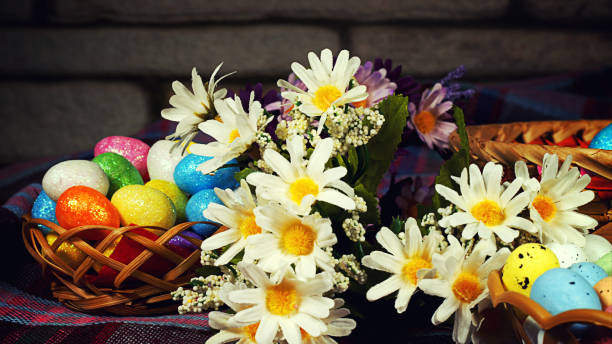
Easter Traditions and Histories.
Here are a few examples of pagan traditions. There are many, you may like to do your own research. The Pagan Book of Days may be a good place to start.
Ostara orgins.
The Sabbat or festival of Ostara is relatively modern. it was Aiden Kelly, who gave names to the Litha, Ostara and Mabon in 1974.

Ostara takes its name after the Germanic goddess, Eostre/Ostara, who was traditionally honoured in the month of April. The Goddess Ostara, or Eostre, is the Anglo-Saxon Goddess of Spring, Resurrection, and Rebirth, and is also the Maiden aspect of the Tripple Goddess in some pagan practices.
Festivals were held to celebrate fertility, renewal and re-birth, but we do not know the names of these ancient festivals.
Other traditions.

- During celebrations of Ēostre/Ostara, buns marked with a cross would be baked across Europe (pre-Christian) to celebrate the springtime goddess. The symbolism of the cross on the bun was believed to represent the four seasons as well as the four main phases of the moon.
- Egg painting a practice, which still happens today, was common in the middle ages.
- Rabbits and hares have long been an ancient symbol of fertility and life.
An unusual Easter tradition.
- In Sweden and Finland, there is an Easter tradition for children to dress as witches, old women and old men. The children go door to door for treats similar to the tradition of Halloween. This would happen on Maundy Thursday or the day before Easter.
The significance of the hare and the Easter bunny.

As we saw earlier Hares and the rabbit, had long been a symbol of fertility and life. In 17th century Germany, there was a tradition about an Easter hare, known as the Osterhase. The Easter hare delivered eggs to children. Eventually, as this tradition spread across the world the hare was replaced with the much more softer and gentle looking rabbit.
But what about the easter egg?
In early pagan times, the egg represented, the Spring Equinox and the renewal of life and fertility. In the Middle Ages, egg painting became a popular tradition as eggs were forbidden during Lent. It is believed that people began to decorate the eggs. The eggs would be eaten over Easter once Lent was over.
Read more about Easter the witches’ Way here.


To Walk a Pagan Path: Practical Spirituality for Every Day by Alaric Albertsson

